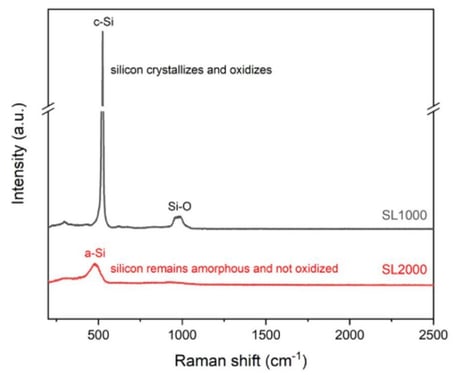Heat exchangers operate under extreme conditions where fouling and corrosion can severely impact performance. High temperatures, reactive environments, and nickel-containing substrates contribute to coking and material degradation. SilcoTek tackles these issues head-on with our innovative CVD (Chemical Vapor Deposition) coatings, which significantly improve heat exchanger durability and efficiency.

Game-Changing CVD Coating Technology
What sets SilcoTek coatings apart is our non-line-of-sight deposition method, which allows for uniform coverage of complex geometries and high aspect ratios. This means SilcoTek coatings can effectively cover everything from small fittings to large chambers and (coming soon!) 24-foot-long tubes—ensuring a tailored solution for each heat exchanger application.
With a molecularly bonded adhesion, SilcoTek coatings prevent flaking and are capable of enhancing even the most challenging parts, such as porous filters with sizes as small as 0.5 microns or tubing as small as 0.004” in diameter. This adaptability makes our coatings highly versatile for numerous applications.
Preventing Coking with SilcoKlean® and Dursan® Coatings
Nickel-based substrates are notorious for catalyzing the formation of carbon deposits from petrochemical substances, a phenomenon known as coking. This fouling effect reduces heat transfer, increases energy costs, and requires more frequent maintenance. SilcoTek’s SilcoKlean and Dursan coatings provide a non-catalytic, protective barrier that reduces coking by up to nine times compared to untreated stainless steel. Figure 1 below compares how SilcoKlean 1000 shows a 9x improvement over stainless steel!
In testing with JP-8 fuel at 500°C, SilcoKlean-coated stainless steel had significantly less carbon buildup than uncoated parts, resulting in improved efficiency, lower operational costs, and reduced maintenance needs.

Superior Pressure Drop Reduction
SilcoTek’s Dursan coating is also a game-changer in minimizing pressure drop in heat exchanger systems. A test conducted with synthetic seawater and calcium sulfate solution showed a 74% improvement in pressure drop after 24 hours for Dursan-coated aluminum compared to uncoated aluminum. The molecularly bonded coating remains adhered to the surface and prevents fouling, allowing efficient and steady heat transfer.

Corrosion Resistance and Extended Lifespan
Corrosion is another major concern in heat exchangers, and SilcoTek’s coatings create a highly inert surface that prevents chemical adhesion and corrosion. In ASTM G85-A2 salt spray testing, Dursan-coated 316L stainless steel showed no rust or degradation, whereas uncoated samples suffered from substantial corrosion. By opting for SilcoTek coatings, operators can extend the service life of their equipment and reduce reliance on more expensive, difficult-to-source alloys like Hastelloy and Inconel.
Moreover, SilcoTek’s ability to perform citric passivation before coating ensures a clean, non-reactive surface, reducing supply chain complexity while enhancing the anti-corrosion capabilities of the equipment.
 The graph above demonstrates the superior corrosion rate of a Dursan-coated and passivated surface over 30 days in 5% HCl, as well as the extrapolated expected performance over 280 days. SilcoTek’s ability to citric passivate and coat parts creates a simple, streamlined supply chain.
The graph above demonstrates the superior corrosion rate of a Dursan-coated and passivated surface over 30 days in 5% HCl, as well as the extrapolated expected performance over 280 days. SilcoTek’s ability to citric passivate and coat parts creates a simple, streamlined supply chain.
Maintaining Thermal and Mechanical Properties
Despite their ultra-thin nature (<2 μm), SilcoTek coatings enhance the durability of heat exchangers without affecting thermal conductivity. The amorphous silicon coatings withstand temperatures up to 800°C before any change in properties occurs, making them ideal for high-temperature applications.
Additionally, the coatings offer improved mechanical properties, such as increased hardness and wear resistance. Testing has shown that SilcoTek coatings improve the wear rate of stainless steel by at least twice compared to uncoated samples, all while maintaining compatibility with sealing surfaces and threaded parts.
The below graphs show the mechanical properties (left) and thermal properties (right) of SilcoTek's coatings.


Limitless Customization Opportunities
The diversity of substrates and parts that can be coated by SilcoTek’s CVD process is unmatched. Stainless steel, aluminum, titanium, high nickel alloys, and even glass can be effectively treated. SilcoTek's coatings are highly adaptable, allowing for coating of both small, intricate parts and larger equipment such as (coming soon!) 24-foot straight tubes or up to 2500 feet of continuous coiled tubes. This flexibility ensures that heat exchanger designs are not limited by the coating process, and engineers can confidently choose the best materials for their application.
Conclusion: The SilcoTek Advantage in Heat Exchanger Systems
SilcoTek CVD coatings provide a comprehensive solution to common heat exchanger challenges, including fouling, coking, and corrosion. By forming a strong, ultra-thin protective barrier, SilcoTek coatings extend the life of heat exchangers while improving thermal performance and reducing maintenance costs. When paired with the appropriate alloy, customers enjoy substantially higher ROI through less maintenance downtime and reducing spend on exotic alloys. Our coatings offer versatility across different materials and configurations, ensuring that every application benefits from the efficiency and reliability of SilcoTek technology.
For more information on how SilcoTek can improve your heat exchanger operations, contact our technical service team at TechService@SilcoTek.com.
Follow Us on Social Media!
